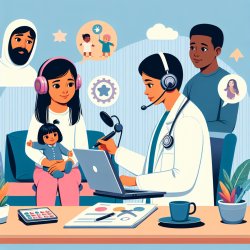Muscle tension dysphonia (MTD) is a prevalent voice disorder, causing up to 40% of voice-related complaints. The traditional treatment involves voice therapy (SLT-VT) administered by specialized speech-language therapists. However, a recent study protocol published in Pilot and Feasibility Studies investigates the feasibility of using Complete Vocal Technique (CVT), a structured pedagogic method, for treating MTD patients.
CVT, primarily used by singers and actors, aims to optimize vocal function. The study explores whether CVT, delivered by trained practitioners (CVT-Ps) via telehealth, can be beneficial for MTD patients. The primary outcome measure is the change in pre- and post-therapy scores of the Voice Handicap Index (VHI), with secondary outcomes including throat symptoms, acoustic/electroglottographic measures, and acceptability assessments.
Key findings from the feasibility study indicate:
- CVT-VT shows potential in improving vocal function in MTD patients, as evidenced by significant improvements in VHI scores.
- Telehealth delivery of CVT-VT is feasible and acceptable to patients, CVT-Ps, and SLT-VTs.
- Differences between CVT-VT and traditional SLT-VT techniques were observed, suggesting CVT-VT offers a novel approach to voice therapy.
For practitioners, integrating CVT principles into therapeutic practices can provide a systematic and scientifically supported method to enhance vocal outcomes. Moreover, the use of telehealth platforms ensures accessibility and continuity of care, crucial for ongoing therapy amidst constraints like the COVID-19 pandemic.
Encouraging further research, this study lays the groundwork for a larger pilot randomized controlled trial comparing CVT-VT and SLT-VT. Practitioners are urged to stay informed on emerging evidence and consider the potential benefits of incorporating CVT into their therapeutic repertoire.
To read the original research paper, please follow this link: A mixed-method feasibility study of the use of the Complete Vocal Technique (CVT), a pedagogic method to improve the voice and vocal function in singers and actors, in the treatment of patients with muscle tension dysphonia: a study protocol










